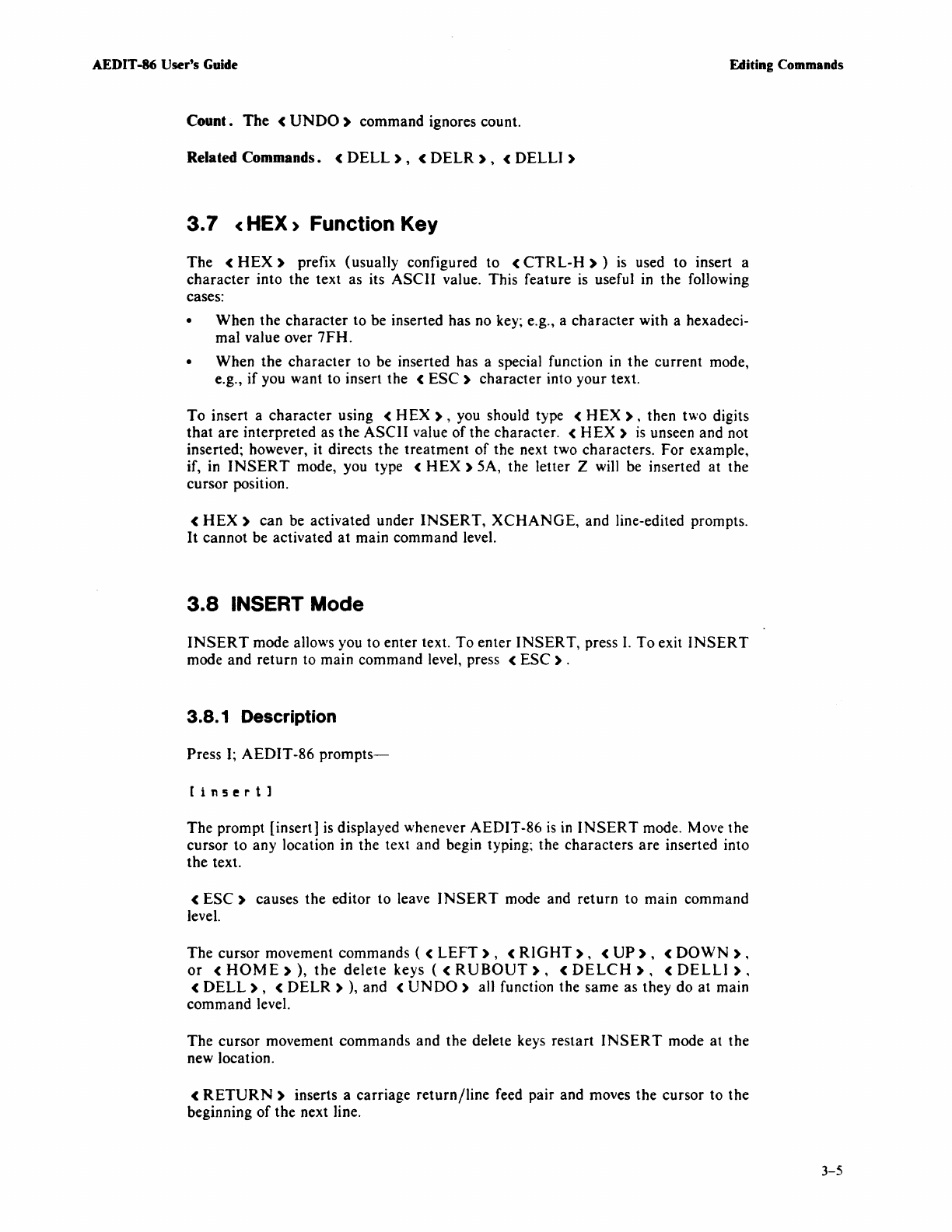
AEDIT
-86
User's
Guide Editing Commands
Count.
The
<
UNDO)
command ignores count.
Related Commands. <
DELL),
<
DELR
),
<
DELLI)
3.7
<
HEX)
Function
Key
The
<
HEX)
prefix (usual1y configured
to
<
CTRL-H
»
is
used
to
insert a
character
into the text as its
ASCII
value. This feature
is
useful in the following
cases:
•
When
the
character
to be inserted has no key; e.g., a
character
with a hexadeci-
mal value over
7FH.
• When
the
character
to be inserted has a special function
in
the current mode,
e.g.,
if
you want to insert the <
ESC)
character
into your text.
To
insert a
character
using <
HEX)
, you should type <
HEX),
then two digits
that
are interpreted as
the
ASCII
value
of
the character. <
HEX)
is
unseen and not
inserted; however, it directs the
treatment
of
the next two characters. For example,
if, in
INSERT
mode, you type <
HEX)
SA, the letter Z will be inserted
at
the
cursor position.
<
HEX)
can be activated under
INSERT,
XCHANGE,
and line-edited prompts.
It
cannot
be activated
at
main command level.
3.8
INSERT
Mode
INSERT
mode allows you to enter text.
To
enter
INSERT,
press I.
To
exit
INSERT
mode and return to main command level, press <
ESC)
.
3.8.1 Description
Press
I;
AEDIT-86
prompts-
[insert]
The
prompt [insert]
is
displayed whenever
AEDIT-86
is
in
INSERT
mode. Move the
cursor to any location in the text and begin typing; the
characters
are
inserted into
the
text.
<
ESC)
causes the editor to leave
INSERT
mode and return to main command
level.
The
cursor movement commands ( <
LEFT),
<
RIGHT),
<
UP),
<
DOWN)
,
or
<
HOME)
),
the
delete
keys ( <
RUBOUT),
<
DELCH
),
<
DELLI)
,
<
DELL),
<
DELR
)
),
and <
UN
DO)
al1
function the same as they do
at
main
command level.
The
cursor movement commands and the delete keys restart
INSERT
mode at the
new location.
<
RETURN)
inserts a carriage
return/line
feed pair and moves the cursor to the
beginning
of
the next line.
3-5
